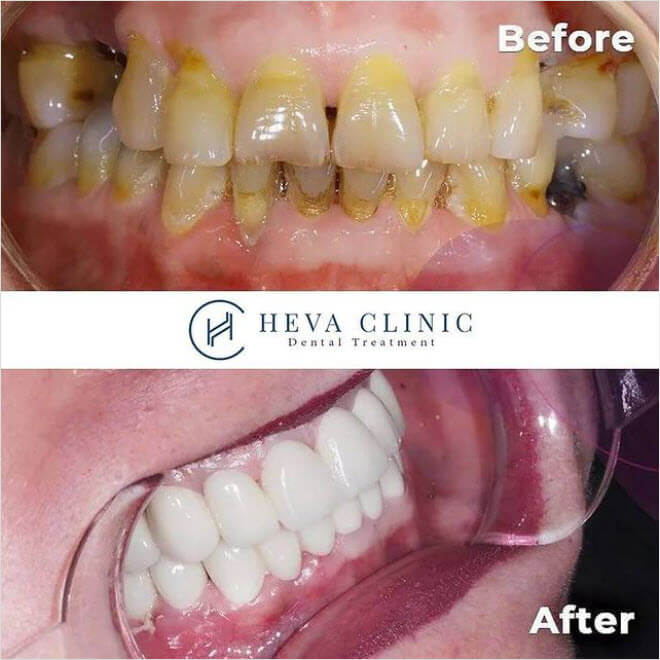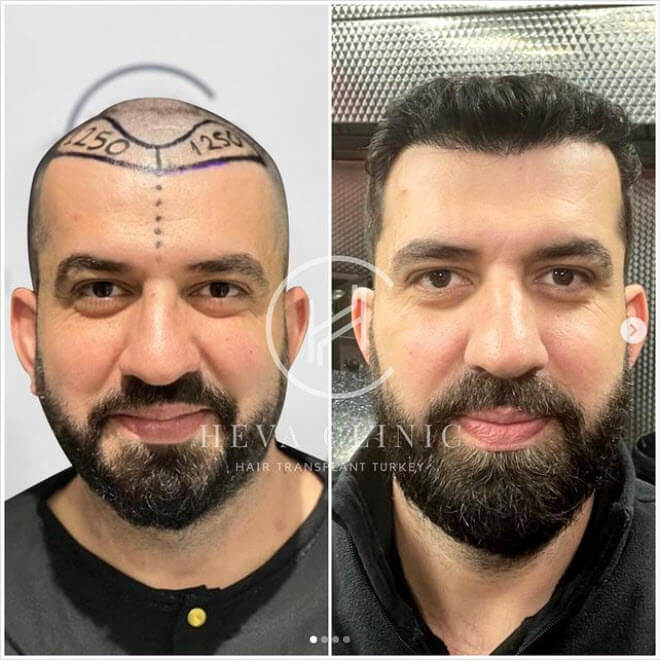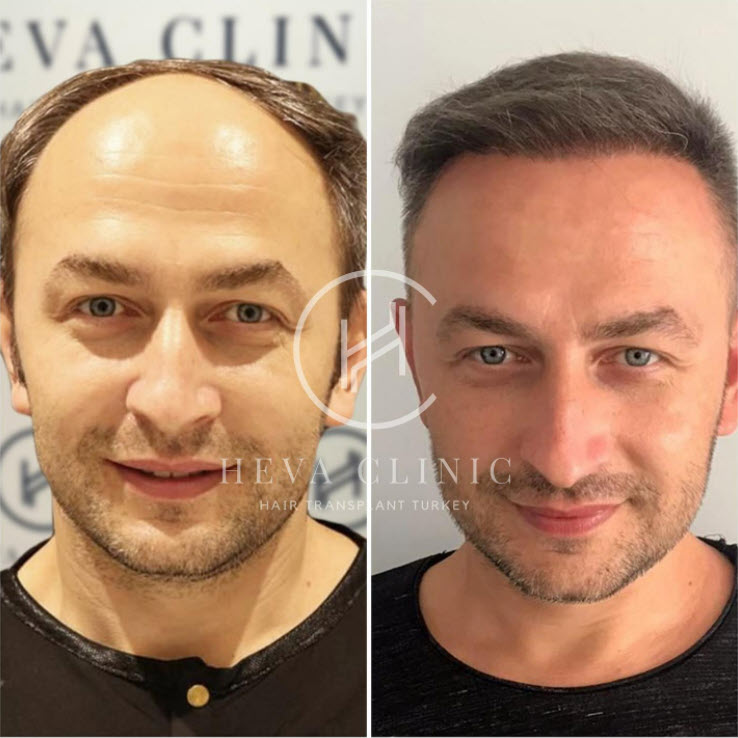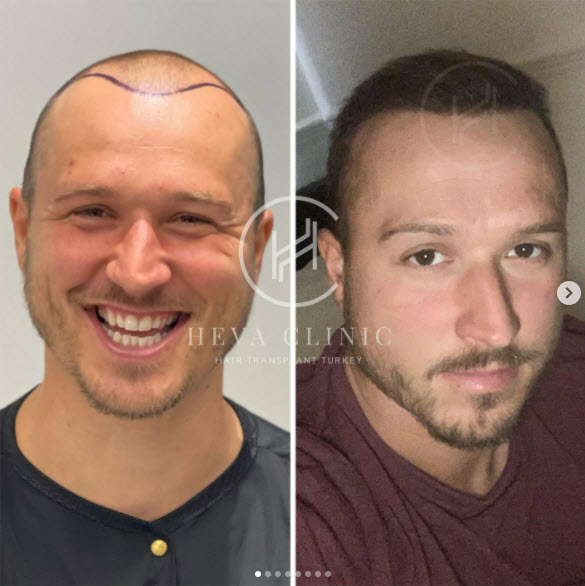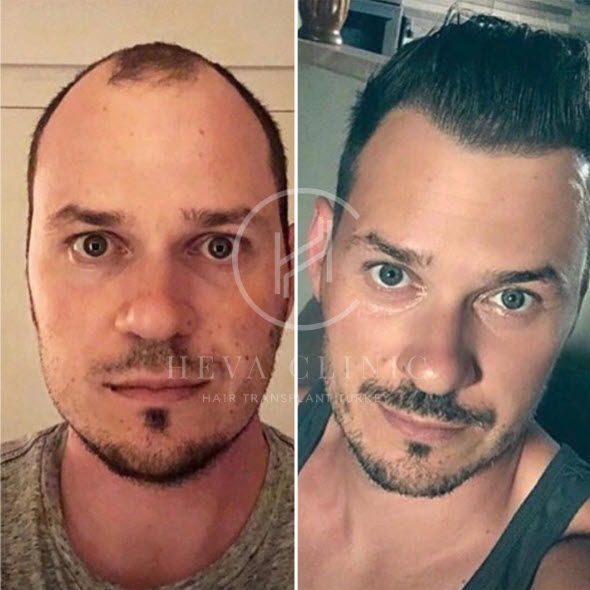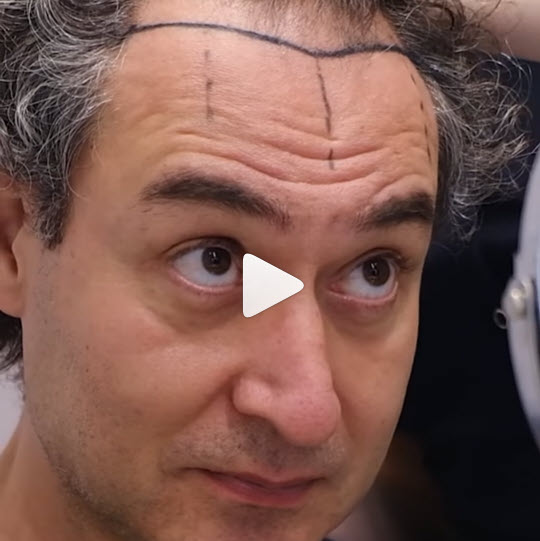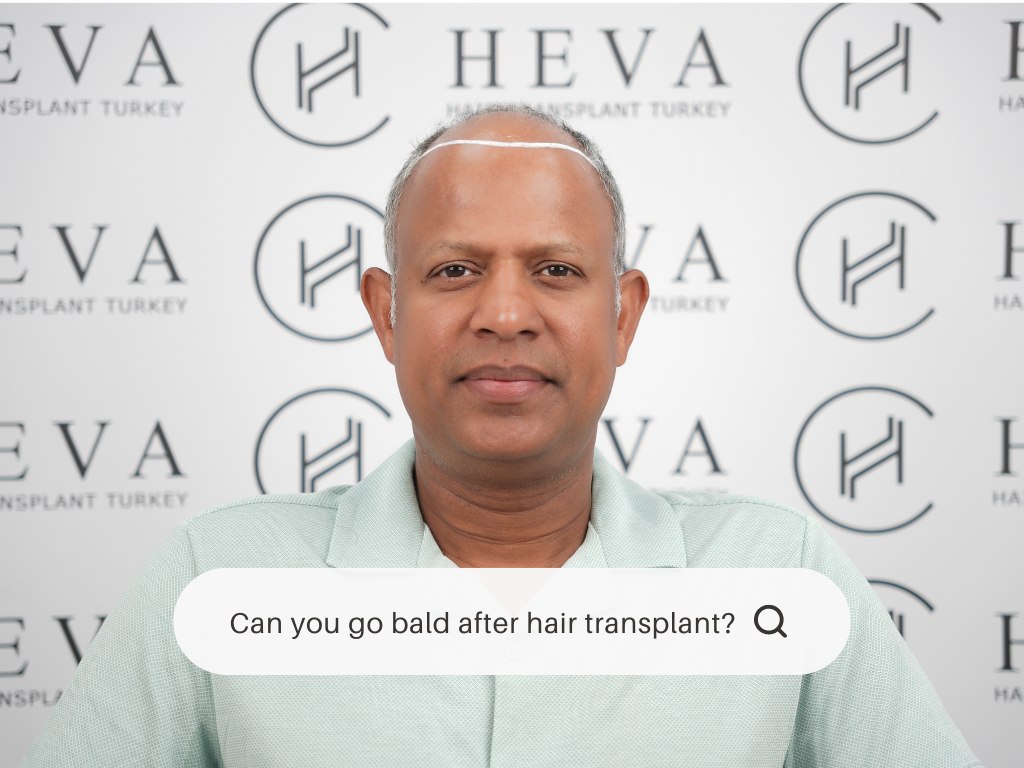
Going bald again is a major concern for men and women planning to undergo a hair transplant. Baldness or thinning hair can deeply affect one’s appearance and cause emotional distress, making people anxious about what to expect after the procedure.
This article provides information on whether you can go bald after a hair transplant and what you can do to avoid it.
What Is Post-Hair Transplant Hair Loss?
Some amount of hair loss is common for a few days after a hair transplant. It is also called shock loss. [1]
Shock loss usually occurs in the donor area, typically at the back of the skull where the hair grafts were taken. In some cases, it may occur in the recipient area.
Shock loss in the donor area is caused by the micro-tearing and detachment of blood capillaries that connect the transplanted follicular units during harvesting. This micro-tearing can shock the surrounding hair, leading to reactive hair loss. This effect may become exacerbated in the presence of a nearby scar or if a blood vessel is cut during the operation. Shock loss in the donor area generally occurs within the first three weeks after the procedure. [2]
Shock loss can occur in the recipient area as a result of the reaction of existing hair to the implantation of hair grafts. This is more common in women with diffuse baldness when the implanted grafts disturb nearby hairs, causing them to fall out before eventually growing back. [3]
Additionally, the surgical procedure may disrupt the blood supply in the donor and recipient areas over the next three weeks, leading to an insufficient supply of oxygen to the tissues. This is another reason that can trigger shock loss.
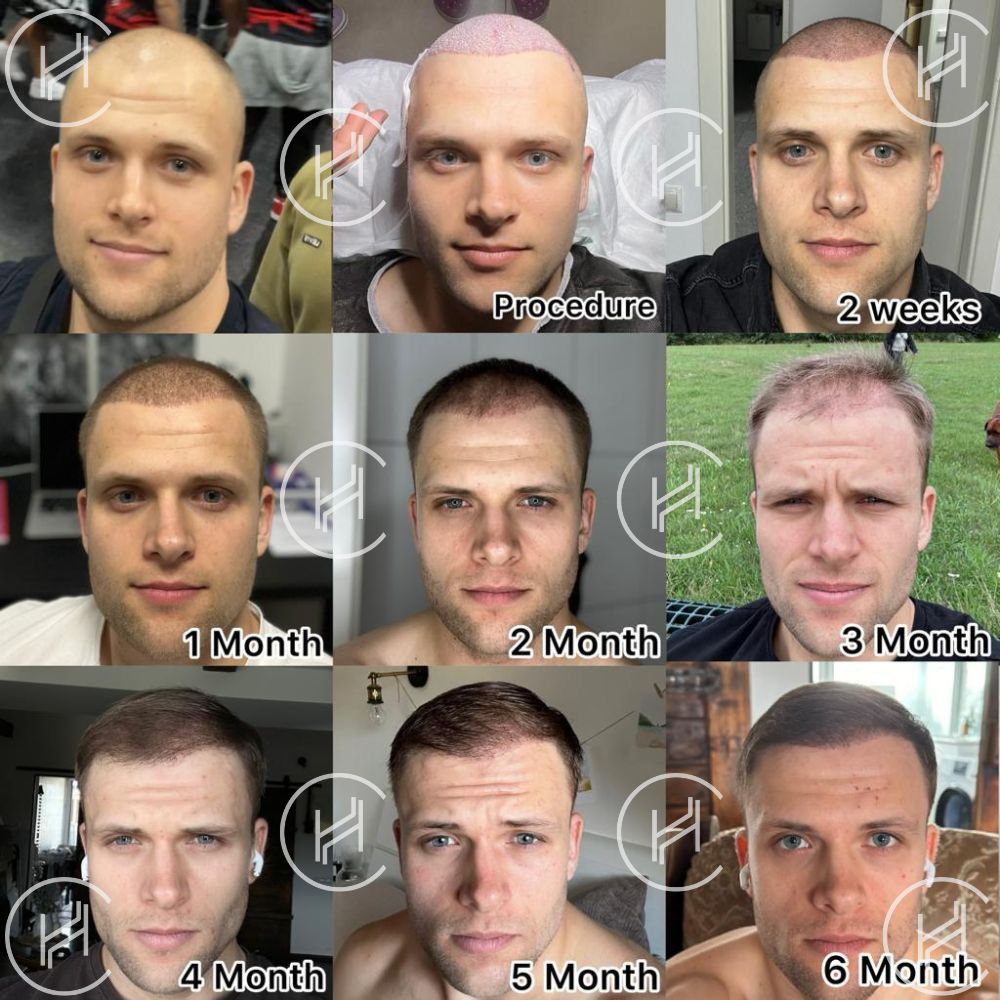
Does Everyone Get Shock Loss After Hair Transplant?
No, not everyone experiences shock loss after a hair transplant, although it is a common occurrence.
Shock loss can happen to varying degrees, with some people experiencing only minimal shedding, while others having a significant amount of hair loss.
However, shock loss, even if significant, is typically temporary. The lost hair usually begins to regrow within a few months as the transplanted hair follicles begin to anchor and produce new hair.
It is also important to follow the aftercare instructions recommended by your hair transplant surgeon to minimize the risk and impact of shock loss. It is also important to have realistic expectations and discuss potential outcomes and the need for future procedures with your surgeon.
How To Stop Balding After a Hair Transplant?

Plan Your Operation For the Next 10 Years
A hair transplant is a long-term investment and it’s essential to think long-term. As hair loss can be progressive, planning your operation for the next 10 years ensures you maintain your results and not suffer from visible hair loss.

Scientifically-proven hair loss medications
Considering medically-proven treatments like medications or PRP hair therapy into your routine can help you maintain your results. The most commonly used hair loss medications are minoxidil and finasteride before & after hair transplant.

Eat A Nutrient-Rich Diet & Staying Hydrated
Eating a balanced and nutritious diet during the post-operative period can help minimize the shock loss and support the growth of new hair follicles, reducing the risk of going bald again.
Also, drinking plenty of water can ensure that the transplanted roots receive proper hydration, preventing dryness and facilitating hair growth.

Following aftercare instructions & using safe products
The use of safe and nourishing hair care products, including post-hair transplant shampoos and conditioners, recommended by your clinic can provide the necessary nutrition to both the recipient and donor areas.
This can ensure that the transplanted hair follicles and new hair strands receive the appropriate care, thus lowering the risk of baldness.
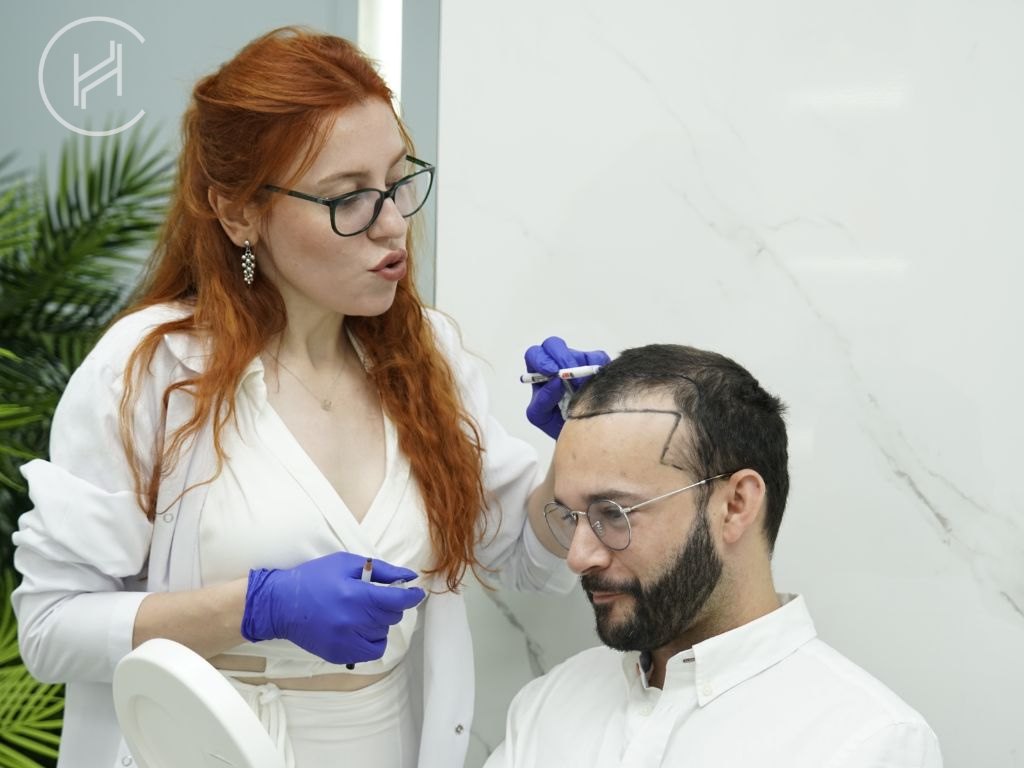
What Happens If You Go Bald After a Hair Transplant?

Proper Timing of the Surgery
Undergoing the hair transplant procedure too early is one of the reasons why some patients experience hair thinning or baldness after the surgery. In these cases, there is a higher chance of having thinning and patchy spots between the transplanted and natural hairlines. So it is important to understand how far the baldness would progress before deciding the timing and planning of the surgery.
An experienced surgeon will make a comprehensive assessment of your baldness pattern and recommend the most suitable timing for the procedure to reduce your risk of going bald again.

Choosing the Experienced Surgeon
Hair thinning after a transplant is more likely to occur when the procedure is performed by a poorly trained, inexperienced surgeon. A skilled and experienced surgeon will consider your age, medical history, baldness pattern, and other factors to determine the ideal timing for surgery and the best technique to help optimize the results and avoid hair loss.
Hence, it is important to choose a hair clinic that has a team of well-trained surgeons and other professionals to prevent failed hair transplant.

Following Aftercare Instructions
Taking proper care of the scalp and transplanted follicles after your hair transplant can help you avoid hair loss and reduce the risk of going bald again. Hence, you must follow all post-hair transplant instructions recommended by your clinic and report any concerns as soon as they arise.
This will improve the outcomes of your hair transplant procedure and allow you to address any issues promptly.

Consider A Second Hair Transplant
If you experience severe loss of your natural hair and want more density, you can consider going for a second hair transplant.
The need for a second hair transplant depends on the density of your hair and the extent of thinning and baldness prior to and after the first transplant.
FAQs
Can hair transplants cure baldness?
A hair transplant can be an effective treatment for baldness. However, it is important to be aware of the scope and limitations of this procedure and have realistic expectations.
While hair transplants can significantly restore hair to thinning or bald areas, they do not cure baldness simply because the procedure does not address the underlying cause, which could be hormonal imbalance or genetic predisposition.
It is also important to note that hair transplants do not prevent further hair loss in untreated areas. Therefore, additional treatments, such as medication or follow-up transplants, may be necessary to maintain the results.
Can a bald man get hair transplant?
Yes, a bald person can undergo a hair transplant as long as he or she has enough donor hair. This procedure does not require collecting healthy hair follicles only from the donor area of the head. The follicles can also be taken from other parts of the body. Hair follicles can be harvested from areas like the arms, legs, chest, beard, and stomach. This procedure is known as a body hair transplant. [5]
This means a person can get a hair transplant even if he is bald. In this case, the hair follicles can be extracted from the other parts of the body and transplanted in the bald areas to restore hair growth.
References:
- https://www.ncbi.nlm.nih.gov/pmc/articles/PMC6371733/
- https://www.ncbi.nlm.nih.gov/books/NBK547740/
- https://www.ncbi.nlm.nih.gov/pmc/articles/PMC6371733/
- https://www.ncbi.nlm.nih.gov/pmc/articles/PMC8647708/
- https://pubmed.ncbi.nlm.nih.gov/24017988/

